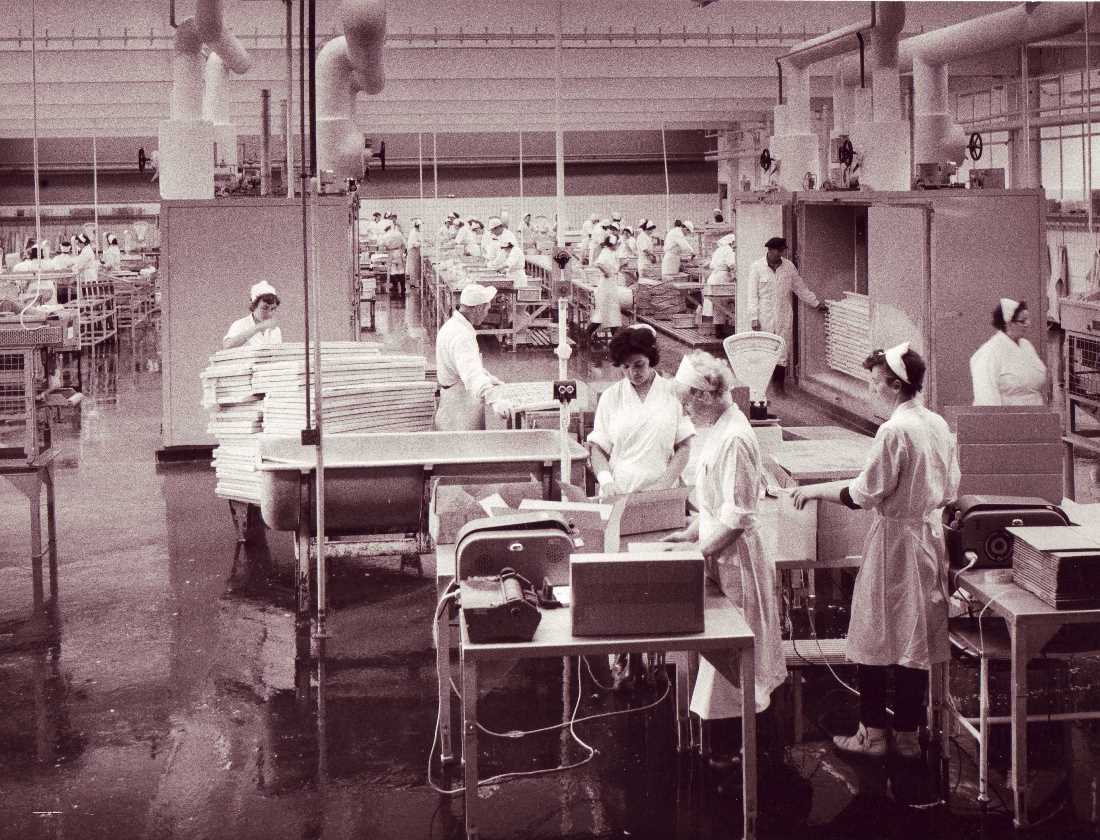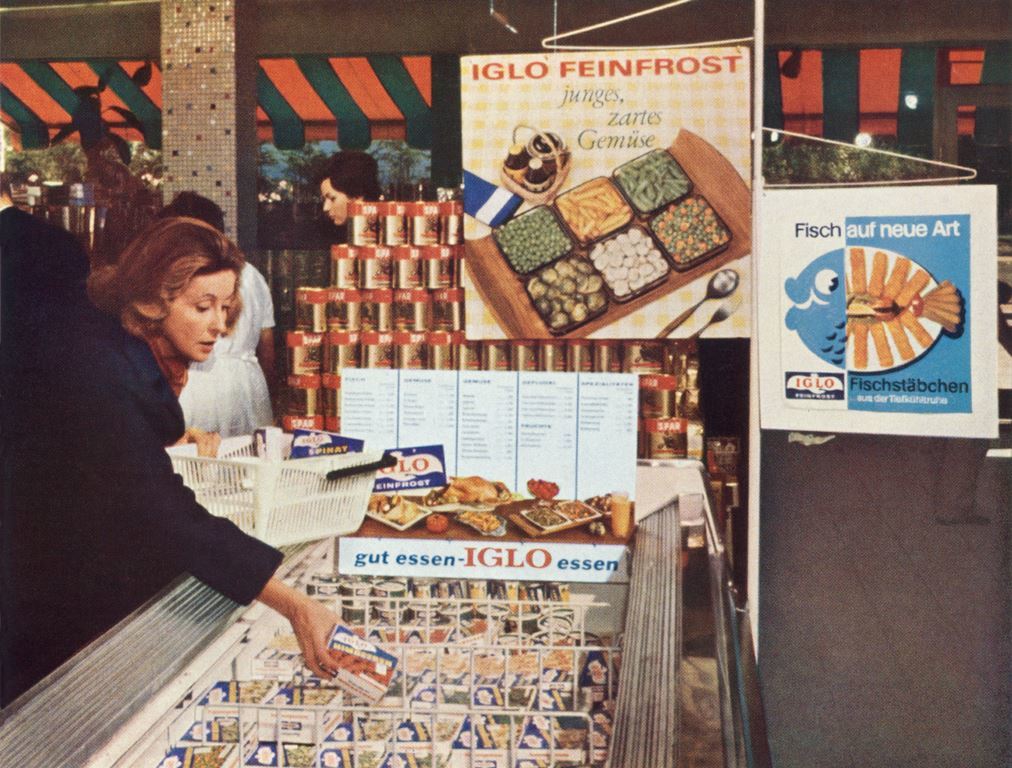The capital of fish fingers
Food and beverageBremerhaven exports fish fingers around the world
The first fish fingers were sold in Germany in 1959, made in Bremerhaven, of course. The seaport is still regarded as the capital of these crispy treats – no great surprise since Iglo and Frosta produce 2.7 billion of them here every year, exporting to around 20 countries. And the appetite for these breaded fish sticks remains unbroken.
German consumers love fish fingers
Fish fingers are a favourite with German consumers, especially children. On average, people in Germany eat 24 fish fingers a year. And the popularity of these tasty treats shows no sign of waning. Few people are aware that they are mainly made in Bremerhaven by Frozen Fish International, a subsidiary of Iglo, and by Frosta. The two competitors’ factories are even on opposite sides of the same street. The companies export to around 20 countries, as fish fingers are in high demand outside of Germany too. “Our products are very popular,” says Frosta’s marketing director, Hinnerk Ehlers. Fish fingers have been one of Frosta’s biggest sellers since the Bremerhaven-based frozen food manufacturer started making them again in 2014 after a lengthy break. The company also produces them for other brands.

2.7 billion fish fingers are exported around the world from Bremerhaven every year
Iglo is very pleased with demand: the company reported double-digit growth in sales in 2017. Iglo is the market leader, producing 1.9 billion fish fingers every year in Bremerhaven. They are sold under a variety of brands outside of Germany, such as BirdsEye in the UK and Ireland, and Findus in Italy. Frosta produces 800 million a year. This makes the seaport the capital of fish fingers, or as Hinnerk Ehlers puts it a little more cautiously: “Bremerhaven is one of the largest production sites in the world.” According to Bremeninvest, the city on the Weser estuary is one of Germany’s leading fish processing sites, with a market share of over 50 per cent. And it’s not just fish fingers that are made here – Frozen Fish International’s site is one of the world’s largest makers of frozen fish products.
One of the most popular convenience foods ever
According to the German Frozen Food Institute, fish fingers have been – and remain to this day – one of Germany’s most popular convenience foods. The secret behind their continuing popularity is simple – they are both healthy and easy to prepare. “The trend towards convenience is continuing,” says Wolfgang Adlwarth of German market research company GfK. The fish finger is one of the products that is benefiting from this.
The idea originated in the UK
Almost 60 years ago, in 1959 to be precise, the first fish fingers were produced in Bremerhaven on an industrial scale by Solo Feinfrost GmbH, a predecessor of Iglo. Only a year later, the product appeared in its first commercial on TV. According to Iglo spokesperson Alfred Jansen, fish fingers were invented in the UK, where strips of cod were covered in breadcrumbs and fried. Iglo’s UK-based sister brand BirdsEye launched the first mass-produced frozen food products on the UK market in 1955. “The company developed the product specifically for children in order to get them to eat more fish,” Jansen quotes from the company’s history books.

Bremerhaven was once Europe’s largest fishing port
It is no coincidence that the idea made its way from the UK to Bremerhaven, which at the time was Europe’s largest fishing port. The fish fingers were branded Iglo (Dutch for igloo) in 1963 when Solo Feinfrost was renamed Iglo Feinfrost. Frosta, a competitor of Iglo, moved into fish finger production in the mid-1960s and started selling them under its own brand name ten years later. According to the German Frozen Food Institute, they are made mainly from Alaska pollock, Atlantic pollock or hake.
Visitors can see how fish fingers are made
For three years now, people have been able to visit Frosta in Bremerhaven and see how fish fingers are made – with no advance notice required. All along the production line, large glass panels have been installed that offer views of what goes on in the factory. “We want people to be able to see how we work,” says Ehlers. This is unusual in a food industry that normally prefers its production methods to remain behind closed doors. Tourist coaches now regularly stop off for a brief visit. The plant is in constant operation over three shifts on five days of the week, and for half a day on Saturdays. The factory is closed on Sundays.
The size of a fish finger is precisely specified
The starting point of every fish finger, whether made by Frosta or Frozen Fish International, is a 7.5kg block of frozen fish. This consists of layers of fish fillets that have been processed at sea. The size of the blocks determines the size of the fish fingers: they are always 9cm long, 2.6cm wide and 1.1cm thick. This ensures that there is no waste.
Everyone has their own batter recipe
On Mondays, Frosta produces its own brand. Works manager Frank Hoogestraat takes visitors through the factory. A machine removes the cardboard covering from the block and a worker checks that no bits of it are still stuck to the fish. An automated saw splits the block into the small shapes which are then transported on a conveyor belt to be covered in batter. “The batter is made from flour, water, salt and spices,” says Hoogestraat. Every customer and every country has its own recipe. For the German and Austrian markets, the percentage of fish has to be at least 65 percent; in France and Eastern Europe it can be as low as 52 percent.
The fish inside the finger remains frozen throughout
The fish fingers then move on to be breaded and pass through an 11 metre long deep-fat fryer for around 30 seconds. “The core remains frozen throughout,” Hoogestraat explains. The frying process merely ensures that the coating sticks to the finger. In the next step, the fingers are flash frozen. “We cool them down to minus 18 degrees,” he adds. All along the production line, staff in white coats check that the machines are working properly. In the final step, a machine packs 15 fish fingers into a folding carton. They are now ready for shipping.
Frosta stopped making fish fingers for ten years
Frosta stopped making fish fingers for ten years as the business was unable to source enough MSC-certified fish. It only restarted production once a sufficient supply could be guaranteed, says Ehlers. Here is another astounding figure – Frosta produces 142,500 fish fingers every hour. The fish fingers made by Iglo are now also made from 100 percent MSC-certified fish. Fish finger fans will be glad to hear that production will continue for the foreseeable future.
Further information on the history of Frosta: https://www.frosta-ag.com/en/company/historical-events/
Press contact:
Friederike Ahlers, Public Relations, Frosta Tiefkühlkost GmbH, +49 40 85414086, friederike.ahlers@frosta.de
Alfred Jansen, Head of Corporate, Brand and Sustainability Communication, Iglo GmbH, +49 40 180249202, Alfred.Jansen@iglo.com
For the German version of this article, please visit BIS Bremerhaven.
Success Stories
Take-off for Bremen: what makes the city a hub for aerospace expertise
The sky is not the limit. Science, production, development and business all agree on this. Aircraft wings, Ariane rockets, Galileo satellites - Bremen is one of the top locations in the international aerospace industry. Five reasons for Bremen's success story.
Learn moreBremen – Germany's greenest city
The greenest major city in Germany is Bremen - with an average of 60 square metres of sports, leisure and recreation space per person. Parks, sports facilities, but also water areas invite you to relax from the hustle and bustle of the city every day.
Learn more8 Bremen Companies involved in Mass Spectrometry
If you want to get down to the smallest building blocks of our world, you need mass spectrometers. And there are few places in the world where there is such a high concentration of specialists and manufacturing companies and suppliers in this sector as in Bremen.
Learn more